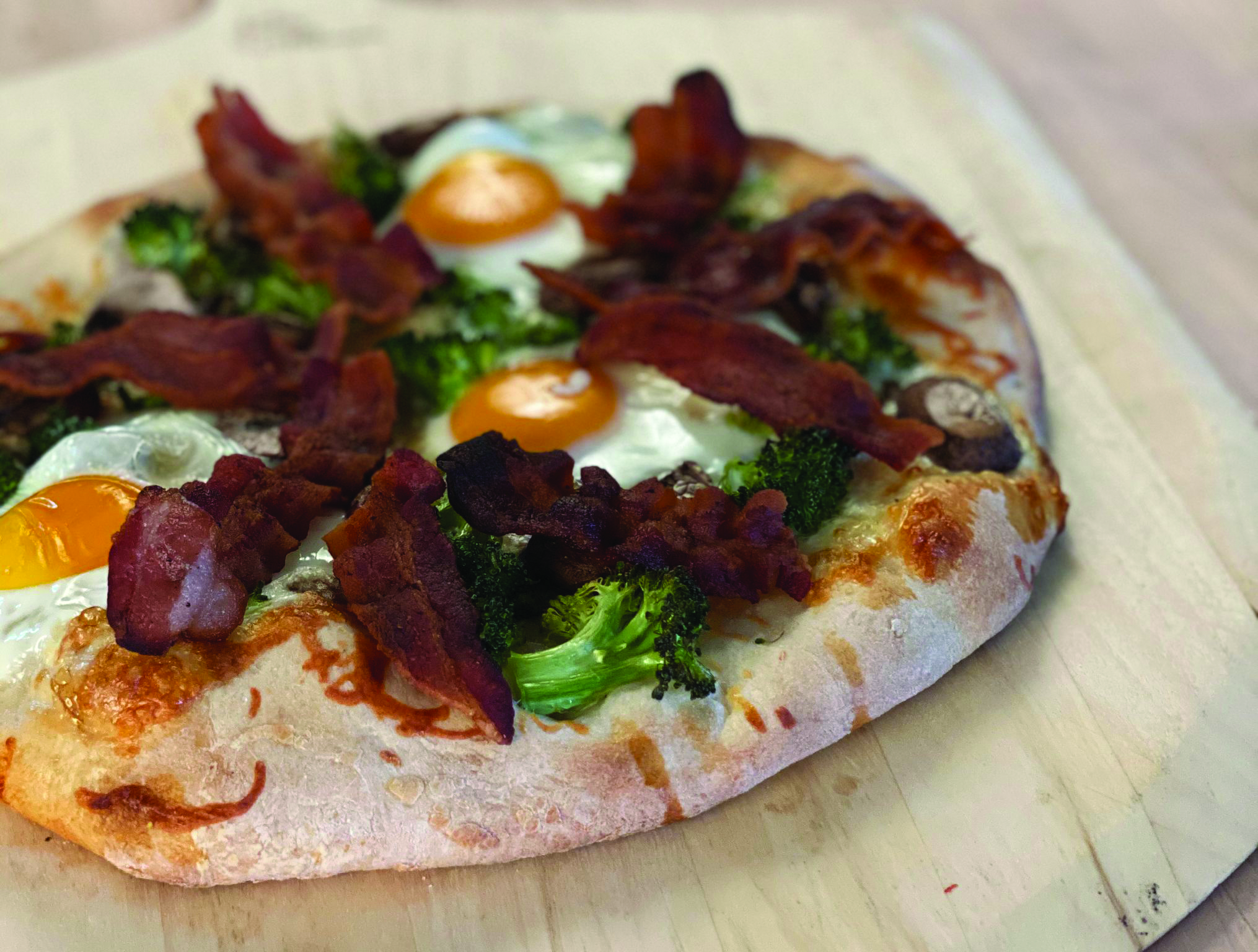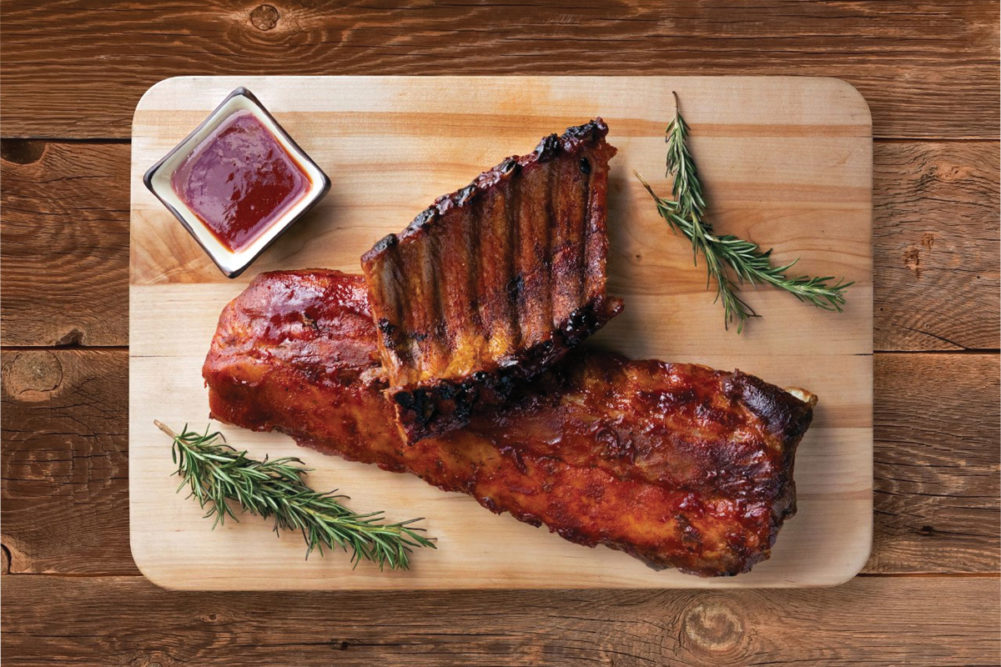KANSAS CITY, MO. - The COVID-19 pandemic has caused anomalies in virtually all products in the grocery store, and pork products have been garnering even more attention than usual from consumers.
People are returning to the familiar amid the pandemic and pork has returned to the center of the plate, as more at-home cooking is driving experimentation and interest across more meal occasions, including more people around the table.
According to IRI, comparing retail sales from March to mid-July 2020 with the same timeframe of 2019, fresh pork is up 20%, breakfast sausage is up 33%, bacon is up 29%, with ground pork (27%) and ham (20%) also showing significant volume gains.
“Five months into the pandemic, and our research is showing that consumers are starting to indicate a bit of cooking fatigue,” said Jason Menke, director of marketing for the Des Moines, Iowa-based National Pork Board. “We’ve had major disruptions to our summer plans due to the pandemic, and I think we’ll see consumers using meals to explore the country and the world through convenient recipes that feature authentic flavors. Pork delivers on that authenticity.”
According to industry data compiled by Kerns & Associates, pork processing plants have been running at around 95% capacity for the last several weeks, so there’s definitely pork available.
“Due to increased demand at retail and labor challenges at the plant, we’re seeing some shifts in specific product availability,” Menke says. “Some retailers may find boneless product less readily available as the plants shift their labor forces around to continue to meet customer demand.”
Mel Coleman, Jr., vice president of Coleman Natural Foods, which is headquartered in Golden, Col., said that although people were pretty much grabbing whatever protein they could find at the height of the outbreak, he’s noticed greater interest in processed items that come from naturally raised pigs, have clean ingredients and can be used for multiple meal occasions.
“For years, there has been a perception that processed meat is bad for you and has a lot of additives and artificial ingredients, but shoppers today have found that there are all-natural, humanely raised options of the fully-cooked items they may have overlooked previously,” he said. “They help with quick meals, satisfying family tastes and keeping variety on the table now that as many as 21 meals are being prepared at home.”
For example, hot dog sales went through the roof well before the traditional “grilling season” which typically starts after Memorial Day.
“Families are learning ways to ‘go beyond the bun’ and incorporate hot dogs and sausages in creative ways for all meals of the day,” Coleman said. “I think shoppers have been pleasantly surprised to find great tasting, all-natural, better-for-you options in the meat section.”
Sean Saenz, senior director of meat/seafood operations for Encino, Calif.-based Gelson’s Markets, noted processed meat sales have been strong during the pandemic in all four main categories: smoked ham/pork, sausage, bacon and frankfurters, averaging a 45% increase.
“So far, the fresh pork category hasn’t seen the shortages like the beef category and keeping a full variety offering has been obtainable,” he said. “Most of the shortages/inconsistencies are coming from the processed pork sales such as bacon and sausage. We’re also seeing a high increase in sales in pork, which has been consistent since the start of the pandemic.”
An Evolving Category

Today’s customers are looking for meal solutions, and Saenz noted that many consumers are looking to pork products to be part of their lunches and dinners.
“Value-added meat products are showing a strong growth,” he said. “Kabobs, marinated, stuffed, seasoned, etc., are all doing well and have been increasing in demand over the last couple of years.”
Coleman said processed pork products are experiencing a comeback, especially with items that have simple, clean ingredients from humanely raised animals.
“When supplies on the shelf were low people may have bought sausages, hot dogs, bacon, ham and other cuts of meat they normally would not have,” he said. “This unexpected trial has resulted in consumers understanding that natural sausages made with clean ingredients are a great source of protein, provide taste great and can be used for multiple eating occasions.”
On the Coleman Natural Foods side, he said the company was very lucky that its harvest plant and the co-manufacturers it works with kept their doors open, while keeping workers safe.
“However, across the industry we will likely see a shift to fresh, bone-in, easier to produce pork items as meat packers have been forced to reduce the number of workers on the plant floor each shift,” Coleman said. “Less steps in the manufacturing process, mean less people, and contact needed.”
Coleman Natural Foods requires farmers to raise their livestock 100% crate free, which results in a healthier, stronger animal who can exhibit natural behavior throughout their life.
“We believe a healthier, less stressed animal, means better meat quality and a great tasting product for our customers,” Coleman said.
Merchandising Tips
Having been with Gelson’s for a number of years, Saenz understands the importance of marketing and merchandising correctly to entice consumers to try and buy pork products.
His No. 1 tip for increasing sales at the store level is to keep a good variety of value-added items on display and to focus on building new value-added items with pork proteins.
“Now is the time to create new recipes and broaden the offering to the consumer,” he said. “Pork ribs (baby-back and spareribs) are showing significant increases, due in large part to customer confidence in freezing abilities. You can also create a value-added module in the meat case and increase your offerings behind the glass.”
Budgets are being tightened and shoppers today want to make sure when they do spend money, they are buying quality food they feel good about feeding their family.
Coleman notes consumers are more interested in where their food is coming from and are looking for meat products raised and processed in the United States on farms that care about the humane treatment of their animals and these are the type of things that need to be highlighted in marketing and merchandising campaigns.
“Inspiring recipes and different ways to stretch a single pack of sausages or bacon over a few meals will help consumers get creative not only in the kitchen, but in stretching their budgets as well,” Coleman said.

Additionally, he said education is key to getting consumer trial and repeat purchases.
“With more people ordering online we believe more time is spent reading labels as opposed to in store shopping where shelves are filled with an overwhelming amount of options,” Coleman said. “Making sure the front of each package tells a strong story is important. Then for those interested, you can continue that great story across all your digital channels, where there are almost unlimited possibilities to how you can share content.”
Also, it is important to get consumers buying pork products not only for their most well-known use—like hot dogs for the grill or bacon for breakfast.
“With all the new home-cooked meal occasions across all dayparts, suppliers and retailers have a unique opportunity to increase sales by challenging consumers to ‘think outside the bun’ or beyond breakfast,” he said. “By that, rather than simply looking at the grill and grilling occasions, we are in a time and season that allows us to encourage consumers to see the sausage category as high protein ingredient for breakfast, lunch, dinner and snacking.”
The varieties and flavors are there to get it done. For instance, with bacon, it is not only a great breakfast bite, but can liven up vegetables, top a salad or make anything better when wrapped in bacon, Coleman said.
Looking Ahead
In the months ahead going into 2021, Coleman believes convenience will be key in both procurement and preparation of pork products.
“To limit exposure and save time and money, consumers want a one-stop shop or virtual cart where they can purchase all their groceries in one trip or delivery,” he said. “Consumers are becoming more concerned about where the meat they purchase comes from, and will be looking for new, simple ideas for preparing family meals. It is important that packaging clearly communicates raising and clean-eating qualities, and brands extend support beyond the meat, to share recipes, tips and tricks.”
That’s why Coleman Foods has been producing new recipes that incorporate some of its most popular prepared items such as bacon, hot dogs, kielbasa and ham to inspire families to go beyond the traditional means of using its various products.
For example, meal preparation goes “beyond the bun” by putting hot dogs in a stir fry, salad or on a pizza. And bacon isn’t just for breakfast. You can liven up veggies add a garnish to pasta, and basically wrapping anything in bacon makes it better.
“Variety and ease of preparation are exactly what consumers are looking for in this crazy, uncertain environment,” Menke said.
This story was featured in the September edition of Supermarket Perimeter. Click here to view the whole issue.

